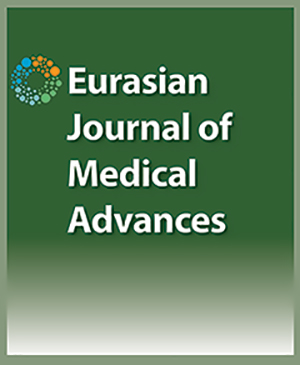

Assessment of Prognostic Factors in Epithelial Ovarian Cancer
Yılmaz Onal1, Osman Kostek2, Muhammet Bekir Hacioğlu3, Bülent Erdoğan2, Hilmi Kodaz4, Esma Turkmen Bekmez5, Ilhan Hacibekiroglu6, Sernaz Uzunoglu2, Irfan Cicin21Department of Internal Medicine, Kanuni Sultan Suleyman Training and Research Hospital, Istanbul, Turkey, 2Clinic of Medical Oncology, Department of Internal Medicine, Trakya University Faculty of Medicine, Edirne, Turkey, 3Clinic of Medical Oncology, Department of Internal Medicine, Konya Training and Research Hospital, Konya, Turkey, 4Department of Medical Oncology, Eskisehir Acibadem Hospital, Eskisehir, Turkey, 5Clinic of Medical Oncology, Department of Internal Medicine, Kocaeli Derince Training and Research Hospital, Kocaeli, Turkey, 6Clinic of Medical Oncology, Department of Internal Medicine, Sakarya University Faculty of Medicine, Sakarya, Turkey,
Objectives: Ovarian cancer is the second most common gynecological cancer, and has a 5-year survival rate of about 40% to 45%. This ratio ranges from 15% to 95%, based on prognostic factors. There are numerous clinical, pathological and biological factors related to prognosis. The aim of this study was to assess prognostic factors in advanced epithelial ovarian cancer. Methods: A total of 119 stage III and stage IV ovarian cancer patients were evaluated. The patient's age, menopausal status, age of menarche, number of children, height and weight values, surgery, tumor histopathological features, presence of metastasis, residual tumor volume, presence of ascites, abdominal lavage cytology, chemotherapy regimen, number of chemotherapy cycles, the first and last chemotherapy dates, relapse, and recent status were evaluated. Results: The median age of the study patients was 54 years (minimum: 34, maximum: 79 years). The pathological stages were 10 (8.6%) patients with IIIA, 6 (5%) patients with IIIB, 76 (63.9%) patients with IIIC, and 27 (22.7%) patients with stage IV. In multivariate analysis, age of diagnosis (hazard ratio [HR]: 0.44; 95% confidence interval [CI], 0.22-087; p=0.01), postoperative tumor residual status (HR: 0.32; 95% CI, 0.14-0.71; p<0.01), number of adjuvant chemotherapies (HR: 0.48; 95% CI, 0.23-0.98; p=0.04), and platinum sensitivity (HR: 0.37; 95% CI, 0.18-0.74; p<0.01) were found to be independent variables related to longer survival. Notably, a patient treated with more than 6 cycles of chemotherapy had a worse prognosis. Conclusion: Independent indicators of a poor prognosis in our study were determined to be advanced age at diagnosis, a residual tumor more than 2 cm in size, more than 6 cycles of chemotherapy, and the presence of platinum-resistant disease. A multidisciplinary approach is needed to improve prognosis.
Cite This Article
Onal Y, Kostek O, Hacioğlu M, Erdoğan B, Kodaz H, Turkmen Bekmez E, et al. Assessment of Prognostic Factors in Epithelial Ovarian Cancer. EJMO. 2017; 1(2): 61-68
Corresponding Author: Osman Kostek



